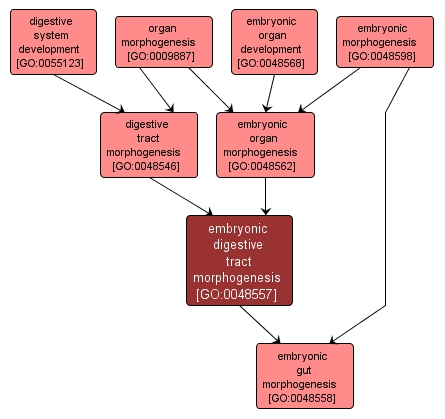| Desc: |
The process by which the anatomical structures of the digestive tract are generated and organized during embryonic development. The digestive tract is the tube extending from the mouth to the anus, including the pharynx, esophagus, stomach, and intestines. |














